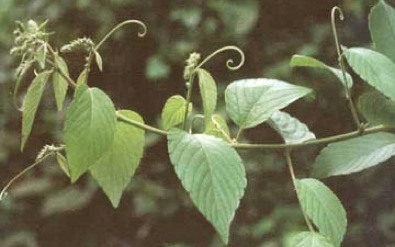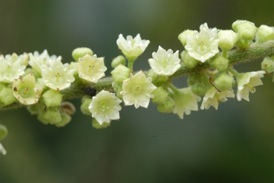Gouania lupuloides: How to Get Chewed Out
The modern toothbrush was unknown in Europe until 1498, the year it came from China. Before that people used chewsticks, and have done so for 7,000 years according to a Babylonian record. They’ve been used for at least a few hundred years in the Americas.
While the Sassafras became the stick of choice of mainland Indians (followed by Sweet Gum) they were introduce to the practice by Caribbean Indians who used the Chewstick. In fact, dental care products in the Caribbean contain powdered Chewstick. It is also used like hops in brewing Jamaican beer. Perhaps it cleans your teeth while you enjoy the suds.
Botanically the Chewstick is Gouania lupuloides (go-AH-nee-ah lou-pin-EE-deez.) Gouania honors French botanist Antoine Gouan, 1733-1821, professor of Botany at Montpellier. Lupuloides means resembling Lupin. That from the word for wolf as the ancients thought Lupin robbed the soil of nutrients. Incidentally, the Brits say lou-pin-oh-EYE-deez, American prefer lou-pin-OY-deez. But the “oides” ending is Greek, thus I prefer lou-pin-EE-deez.
Green Deane’s “Itemized” Plant Profile
IDENTIFICATION: A shrub or woody vine, climbing by hooked tendrils, to 30 feet long. Leaves alternate, oval or elliptic to ovate, pointed, toothed, one to three and a half inches long, thin with hair stems. Flowers greenish yellow or white with five clawed petals, on slender spikes. Fruit a three-winged capsule.
TIME OF YEAR: Year round
ENVIRONMENT: Common in hammocks
METHOD OF PREPARATION: Use pencil sized twig for tooth brush, chewing one end. It will get frothy. Dried stems powdered can be used as a tooth powder. Stems can also be used like hops in brewing.




